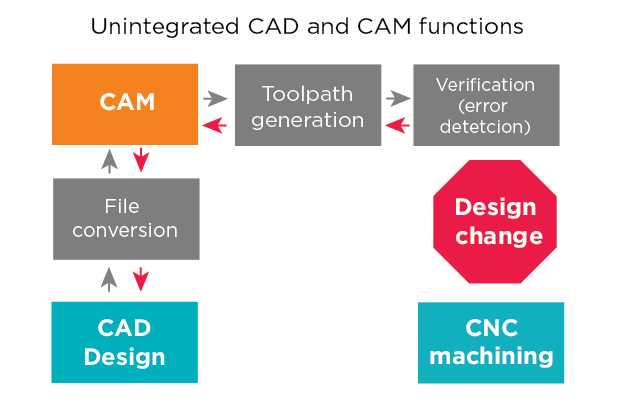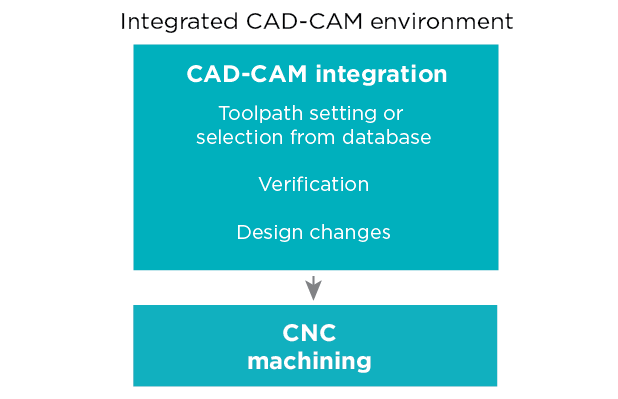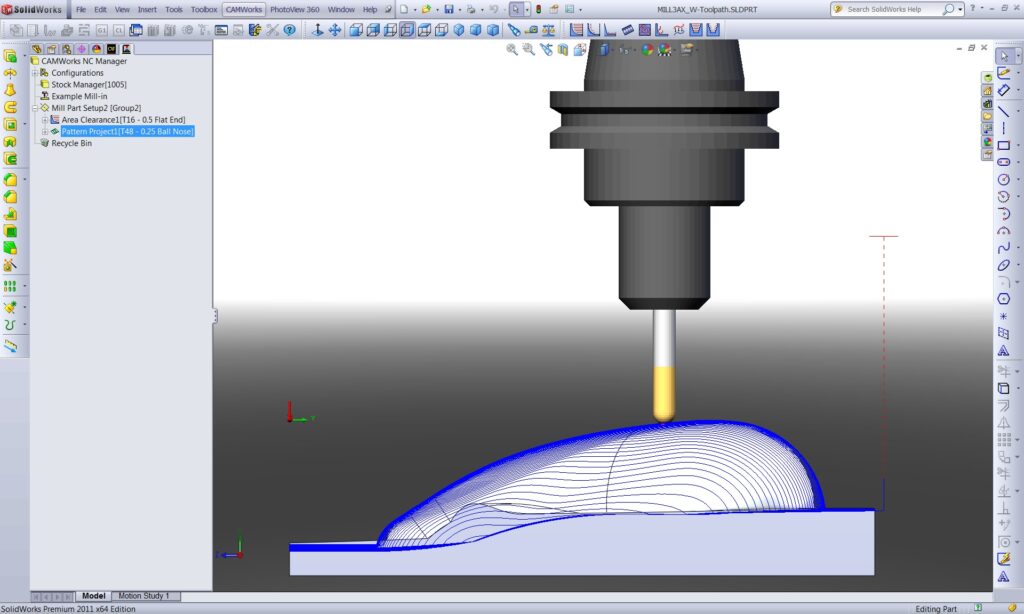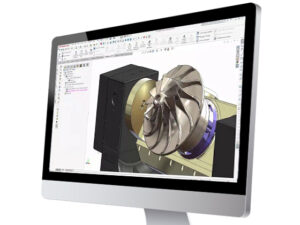

Over the past 10 years, productivity in the manufacturing industry has increased 1.2% compared to 2.6% in the previous 7 years. Emerging technology trends are disrupting the manufacturing industry, creating a need for increased innovation to remain competitive.
Separate product design and manufacturing groups caused late-stage engineering changes, affecting cost, quality, and time to market. Designers use CAD software, while manufacturing uses CAM applications to create tool paths, resulting in the need for data imports and translations. Any design changes due to manufacturability require repeating the process.
CAMWorks provides an integrated CAD/CAM solution that bridges the gap between design and manufacturing, allowing for complete control over the entire process and enabling easy design changes with automatic toolpath adaptation. This results in efficient and cost-effective manufacturing processes crucial for productivity and competitiveness.
Let’s look at five major benefits integrated CAD/CAM systems can offer:
1. Eliminate CAD and data translation errors

Using integrated CAD/CAM systems eliminates costly and error-prone data translations between separate CAM and CAD applications. Standalone systems can have version issues and lags, causing errors. Integrated systems offer associative machining, automatically updating CAM data when design modifications are made, eliminating time-consuming rework.
2. Stay organized (avoid multiple disconnected files to maintain)

Maintaining and updating separate CAD and CAM files is difficult. Integrated CAD/CAM systems keep data organized for parallel team collaboration and faster reaction to design changes. Repositories with file management ensure everyone uses the latest design iteration. Using a master model with associativity allows for faster analysis, simulation, and cutter path updates without version conflicts.
3. Simplified workflow
Standalone CAM systems are typically process-based rather than feature-based programming systems. The process begins by selecting the tool and then creating operations like rough milling a pocket. Then the speed, feed, and other cutting parameters, including machining depth, are entered in system and the process is created. Another tool is selected–for example, to finish pocket–and the earlier steps are repeated to create another process. Once the processes are completed, the program can be simulated and post-processed to create the G code required for the manufacturing operation.

When using a standalone CAM system, it’s typical for programmers to treat each part as a new and different program, even when it has features like other parts already programmed and machined. Each programmer may have a different idea about how to program this part and standalone CAM systems promote this idea, so the result is 5 different programmers with 5 different inconsistent programs, all believing theirs is the best program.
An integrated CAD/CAM system eliminates the extra steps of data translation and utilizing the same interface as the design allows for a simplified design to manufacturing workflow. This can mean reduced training time, fewer IT resources maintaining multiple CAD and CAM software packages, and a more robust process.
4. Automate the manufacturing processes
Standalone CAM systems lack integration with leading CAD solutions like SOLIDWORKS, making automation impossible. HCL CAMWorks’ integrated CAD/CAM allows you to take advantage of automation. For example, using tolerances, surface finish information, and product manufacturing information (PMI) on 3D models automatically creates CNC programs (including selecting the appropriate tools, speeds, feeds, etc. to generate the best toolpaths).
5. Integrated validation tools
Integrated CAD/CAM systems typically include modules for validating designs before starting the machining operations. Few integrated CAM systems perform G-code machine simulation directly integrated within the CNC programming environment. This helps eliminate dry runs for program validations, dramatically reducing setup time. Once the program has been simulated directly from the G-code, it is ready to run on the machine. These simulations or validations help avoid costly machine collisions and programming errors, ultimately reducing scrap and improving overall quality.

Integrated CAD/CAM promotes collaboration between design and manufacturing departments, facilitating early consideration of manufacturability issues to achieve high quality, reduce errors and rework, control costs, and meet program schedules. Working with the same system also makes collaborating easier for programmers and designers.
CAMWorks is the first CAM system fully integrated inside SOLIDWORKS. CAMWorks leads the way in Automatic Feature Recognition (AFR) and Interactive Feature Recognition (IFR) advancements. CAMWorks offers true associative machining – automatically accommodating changes to the part model.
Thanks to its seamless integration with SOLIDWORKS, CAMWorks allows you to:
- Use and manage just one file for both CAD and CAM systems
- Use the CAMWorks machining tree and commands at the click of a button along with SOLIDWORKS, plus generate toolpaths without leaving the familiar SOLIDWORKS environment
- Use the same SOLIDWORKS geometry to generate toolpaths to ensure the part machined is the same as the part that is modeled
- Eliminate time-consuming file transfers using standard file formats such as IGES and STP
Contact Us
Have a question? We’re always available to talk over the phone at 262-790-1080, for you to leave a message or for you to submit a request – just contact us.
Share
Meet the Author

